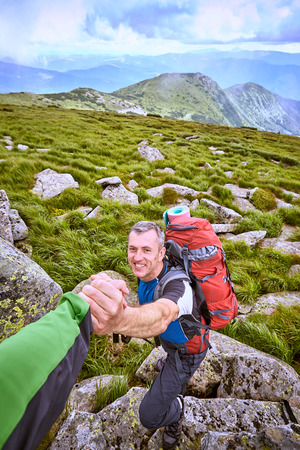Leave No Trace Principles for Waste
When it comes to camping in America’s wild places, respecting the land is more than just a good idea—it’s an essential part of the outdoor experience. The Leave No Trace principles are a set of guidelines designed to help campers minimize their impact, and waste management is a cornerstone of this philosophy. Whether you’re exploring the backcountry of Yellowstone or pitching a tent in a quiet state forest, following these practices protects both the environment and the experience for future adventurers. In particular, Leave No Trace emphasizes proper disposal of human and food waste, packing out all trash, and leaving natural spaces as untouched as possible. These habits are especially important in U.S. wilderness areas, where fragile ecosystems can be easily damaged by careless behavior. As campers, embracing these standards not only preserves the wild beauty we love but also reflects respect for public lands that belong to everyone.
2. Human Waste: How, Where, and What to Do
Managing human waste responsibly is a core principle of sustainable camping in the American wilderness. Not only does it protect local ecosystems, but it also ensures that wild spaces remain enjoyable for everyone. Here’s a step-by-step guide on what you need to know and do:
Step 1: Know the Regulations
Before heading out, check the rules for your destination. Different public lands—like National Parks, National Forests, or BLM areas—may have specific requirements about waste disposal. The table below summarizes common regulations across popular American camping regions:
| Camping Area | Allowed Disposal Methods | Packed-Out Required? |
|---|---|---|
| National Parks (e.g., Yosemite) | Catholes or Pack-Out (varies by zone) | Yes, in high-traffic/backcountry zones |
| Bureau of Land Management (BLM) Lands | Catholes or Wag Bags | Recommended in sensitive areas |
| State Parks | Designated Restrooms or Catholes | Seldom required but encouraged |
| Wilderness Areas (e.g., Boundary Waters) | Pit Toilets or Pack-Out Systems | Often required due to fragile environments |
Step 2: Digging Catholes Properly
If catholes are permitted, follow these steps:
- Select Your Site: Go at least 200 feet (about 70 big steps) from water sources, trails, and campsites.
- Dig Deep Enough: Use a trowel to dig a hole 6–8 inches deep and 4–6 inches in diameter.
- Bury It Right: Deposit waste and used toilet paper (preferably unscented, biodegradable), then cover thoroughly with soil and natural materials.
- No Markers Needed: Avoid leaving visible markers; let nature reclaim the site.
Packing Out: When and How?
Certain environments—such as alpine zones, deserts, or high-traffic backcountry routes—require you to pack out all human waste. This is usually done with commercial “wag bags” or DIY kits that seal contents odor-free until proper disposal at home or designated facilities.
Troubleshooting Common Problems
- No Trowel? Use a sturdy stick or rock to dig a shallow hole if absolutely necessary.
- No Privacy? Ask your group for lookout help or wait until the area clears.
- Packing Out Feels Awkward? Remember, it’s about protecting the wilderness for everyone—most campers adapt quickly!
![]()
3. Managing Trash and Food Scraps Responsibly
Keeping the wilderness pristine starts with smart waste management, especially when it comes to trash and food scraps. In the backcountry, “pack it in, pack it out” isn’t just a saying—it’s a promise to future campers and wildlife. Here are some practical tips for managing your waste responsibly:
Packing In: Bring Only What You Need
Choose reusable containers and minimal packaging whenever possible. Before your trip, repackage food into lightweight bags or containers that you can reuse or easily carry out. Avoid single-use plastics and items that generate unnecessary waste.
Packing Out: Leave No Trace
Everything you bring in—including wrappers, cans, twist ties, and even micro-trash like bread ties or fruit stickers—needs to leave with you. Designate a sturdy, sealable bag (like a heavy-duty freezer bag or odor-proof sack) for collecting all trash. Double-bag if needed to prevent leaks or smells.
Sorting Waste at Camp
Separate recyclables from regular trash if your local trailhead or campground has recycling bins. If not, keep them separate so you can recycle when you return home. Never bury or burn trash; both methods can harm the environment and wildlife.
Storing Food Scraps Safely
Food scraps attract animals—from ants to bears. Store any leftover food and scraps in bear-resistant canisters, odor-proof bags, or hang them in a bear bag at least 10 feet off the ground and 4 feet away from tree trunks. Never leave food unattended in camp or toss scraps into the woods.
Avoiding Wildlife Conflicts
Proper storage protects both you and wild animals. Animals that get used to human food can become aggressive or sick, and might eventually need to be relocated or euthanized by park authorities. By securing your food and waste, you’re helping keep wildlife wild.
Keep Wilderness Clean for Everyone
Your efforts make a real difference—not just for the next group of campers but for the land itself. Responsible waste management ensures that trails stay beautiful, water stays clean, and wildlife stays safe. Make it your standard practice on every adventure.
4. Eco-Friendly Gear and Sustainable Products
One of the most impactful steps campers can take toward sustainable waste management is to carefully choose their gear and products. Fortunately, there are many eco-friendly and reusable options widely available in the U.S. that help minimize your environmental footprint while camping. Here’s a breakdown of recommended items and tips for making greener choices:
Biodegradable Soaps and Cleaning Products
When washing dishes or yourself in the wild, always use biodegradable soap. Unlike conventional soaps, these break down naturally without polluting waterways or harming local flora and fauna. Popular brands like Dr. Bronner’s and Campsuds are easy to find in outdoor stores across the country.
Reusable Containers and Utensils
Single-use plastics are among the biggest sources of campsite waste. Instead, pack reusable water bottles, food containers, and cutlery. Stainless steel or BPA-free plastic options are lightweight and durable—perfect for the outdoors.
Quick Comparison: Sustainable vs. Single-Use Products
| Item | Sustainable Option | Single-Use Alternative | Benefits |
|---|---|---|---|
| Water Bottle | Stainless Steel/Reusable Plastic | Bottled Water | Reduces plastic waste, saves money |
| Dishes & Utensils | Bamboo/Titanium/Steel Sets | Disposable Plates & Cutlery | Durable, no landfill waste |
| Soap | Biodegradable Liquid or Bar Soap | Conventional Soap | No harmful runoff, eco-safe ingredients |
| Food Storage | Silicone Bags/Bee’s Wax Wraps | Ziploc Bags/Plastic Wraps | Reusable, reduces microplastics exposure |
| Towels & Napkins | Microfiber/Recycled Cloths | Paper Towels/Napkins | Lighter pack weight, less trash generated |
Sourcing Sustainable Products in the U.S.
You can find sustainable camping gear at major retailers such as REI, Patagonia, and even Target or Walmart. Online marketplaces like Amazon also offer eco-friendly camping bundles. Look for certifications such as “BPA-Free,” “Compostable,” or “Certified Biodegradable” when shopping.
Pro Tips for Campers:
- Buy in bulk to reduce packaging waste.
- Select multi-purpose items—like a bandana that serves as a napkin, pot holder, or washcloth.
- If you need single-use products (for emergencies), choose compostable versions made from corn starch or bamboo.
The shift to sustainable gear isn’t just about protecting nature—it often makes your camp setup simpler and more enjoyable. Small changes in your packing list can have a big impact on preserving America’s wild places for future generations.
5. Gray Water Disposal and Hygiene in the Backcountry
When camping in the wilderness, managing gray water—the wastewater from washing dishes or bathing—is just as important as handling human waste. Improper disposal can contaminate local streams, harm wildlife, and disrupt the delicate ecosystem. Here are some best practices to ensure your gray water management is both sustainable and respectful of the land.
Choose Biodegradable Soaps
Always use biodegradable soap for washing dishes or yourself. Even then, remember that “biodegradable” doesn’t mean harmless; these soaps still need soil to break down properly. Avoid washing directly in lakes or streams, even with eco-friendly products.
Dispose Away from Water Sources
The Leave No Trace guidelines recommend straining dishwater to remove food particles (which you should pack out or trash) and then dispersing gray water at least 200 feet (about 70 adult steps) away from any lakes, rivers, or streams. This helps protect waterways from contamination and prevents attracting wildlife to camp areas.
Strain and Scatter Method
Use a fine mesh strainer to catch food scraps when disposing of dishwater. After straining, broadcast the remaining water over a wide area rather than dumping it all in one spot. This allows soil microorganisms to filter and break down any residues.
Bathing Practices
If you need to bathe, fill a container with water and carry it away from natural sources before washing up. Use a washcloth or sponge bath instead of immersing yourself in streams or lakes. Collect used water and dispose of it following the same scatter method as dishwater.
Maintain Camp Hygiene
Keep your kitchen area clean and free of food scraps to minimize wildlife encounters. Store strained food particles in a sealed bag until you can pack them out. Regularly sanitize your hands with hand sanitizer or biodegradable soap and filtered water, especially after using the restroom or handling waste.
Respecting Nature for Future Generations
By thoughtfully managing gray water and practicing good hygiene, you help preserve America’s wild places for future campers while ensuring your own health and safety. It’s a simple but powerful way to give back to the land that gives us so much adventure.
6. Community Responsibility and Reporting Issues
When it comes to sustainable waste management in the American wilderness, each camper plays a vital role—not just in taking care of their own impact, but also in being a proactive member of the outdoor community. Stewardship goes beyond “leave no trace” principles; it means actively contributing to the health of our shared wild spaces.
Why Reporting Waste Problems Matters
Major waste problems—like illegal dumping, overflowing toilets, or hazardous materials left behind—can seriously harm local ecosystems and ruin the experience for future visitors. By reporting these issues to land managers, park rangers, or relevant agencies, you help ensure quick response and long-term solutions.
How Campers Can Report Waste Issues
- Contact Local Authorities: Most national parks and forests have hotlines or online forms for reporting environmental concerns. Save these contacts on your phone before your trip.
- Provide Specific Details: When reporting, note the location (GPS coordinates if possible), type of waste, and any potential dangers to people or wildlife.
- Follow Up: If you don’t see action after reporting, follow up or spread awareness through local outdoor groups or social media communities.
Join Cleanup and Education Efforts
Getting involved is easier than you think. Look for volunteer cleanup days hosted by organizations like Leave No Trace Center for Outdoor Ethics, local hiking clubs, or state park friends groups. Sharing your experiences—both good and bad—on social media can also raise awareness among fellow campers. Educational outreach helps reinforce best practices within your community and supports a culture of respect for America’s natural spaces.
Together, we can preserve the beauty and health of our wilderness for generations to come—one responsible step at a time.


